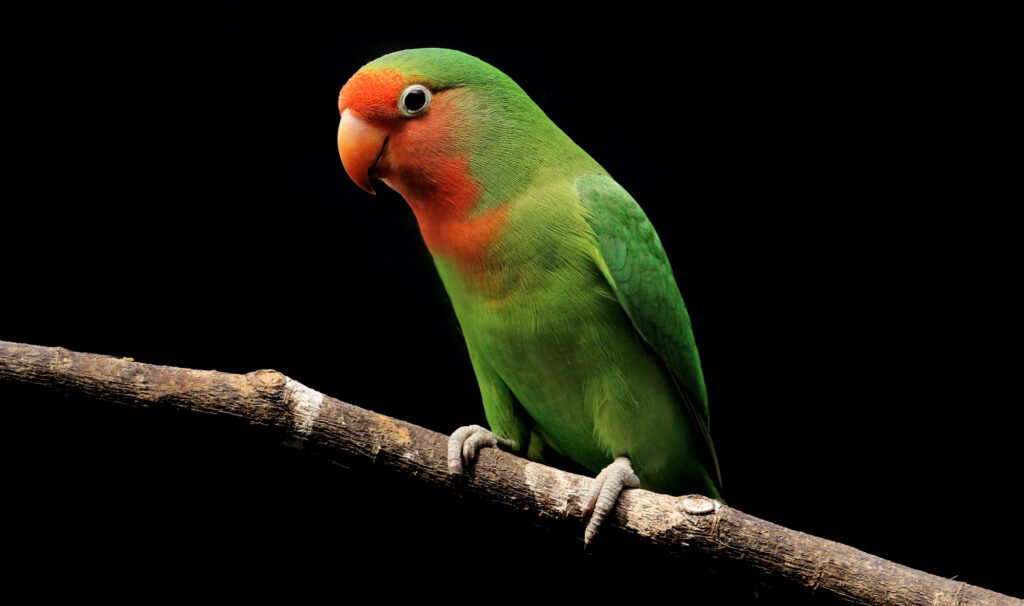LOVEBIRDS, LIFESPAN, AS PETS, SINGING, SOUNDS, IMAGES, PICTURES, VIDEOS, DISEASES, CARE, DIET
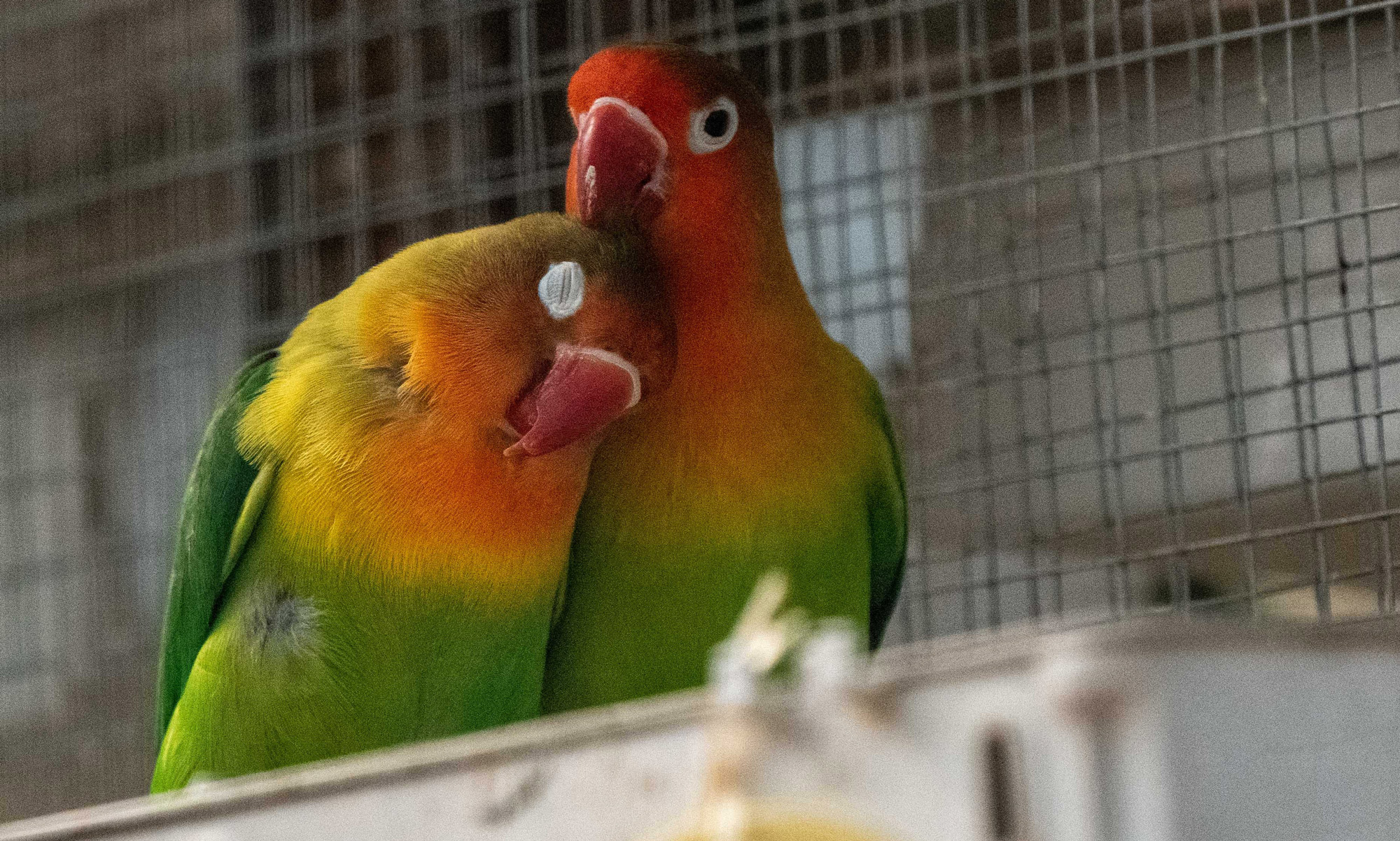
Lovebirds (genus Agapornis) are a species of parrot that are known for their affectionate behavior and strong bonds with their partners. These birds are native to Africa and are popular as pet birds due to their small size, vibrant colors, and playful personalities. They are often kept in pairs, as they are known to form strong bonds with their mates and can become lonely and stressed when separated.
A PLAYFUL PET
To begin with, Lovebirds are known for their playful and mischievous personalities. They love to play and explore their surroundings, and they often enjoy climbing and swinging on toys. They are also known for their intelligence and can be trained to perform tricks and perform acrobatics. Their vibrant colors and playful personalities make them a popular choice as pet birds.
WHAT COLOR IS THE LOVEBIRD?
They come in various colors and patterns, the most common being the green lovebird. Other popular color mutations include blue, yellow, black, white, and even pied (multiple colors).
The green lovebird is the most common color mutation, with bright green plumage and a red beak. The blue lovebird is a powdery blue color, with a yellow or white face and a black beak. The yellow lovebird is bright yellow with a white face and a black beak. The black-cheeked lovebird is predominantly green, with a black face and a red beak, while the white-faced lovebird is primarily green with a white face and a red beak.
WHAT IS THE SIZE OF LOVEBIRDS?
The Lovebirds are small parrots, with a body length of about 13 to 17 centimeters (5 to 7 inches). They have a compact and stocky build, with a round head, a short neck, and a stubby tail.
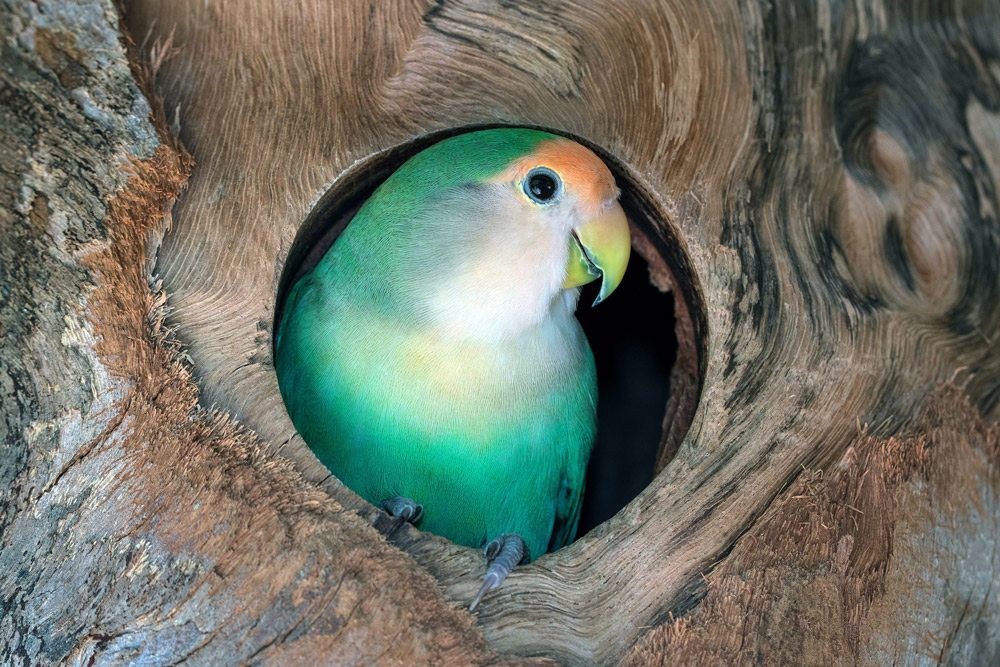
WEIGH OF LOVE BIRD?
Lovebirds typically weigh between 40 to 60 grams (1.4 to 2.1 ounces). This makes them one of the smaller species of parrots and a popular choice for pet birds.
Indeed, it’s important to monitor your lovebird’s weight and to provide them with a healthy diet to prevent obesity, which can lead to several health problems. Lovebirds are active birds that need plenty of exercises, so it’s important to provide them with toys and opportunities for play and exploration to help keep them healthy and at a healthy weight.
LOVEBIRD MATE FOR LIFE
To pursue, one of the most unique aspects of lovebirds is their strong bond with their mates. Lovebirds are known to mate for life and are incredibly loyal to their partners. They often spend hours preening and grooming each other, and they will frequently cuddle and snuggle together. When separated from their mates, lovebirds can become stressed and lonely, and their health can even be impacted.
WHAT IS THE LIFESPAN OF LOVEBIRDS?
The lifespan of a lovebird can vary depending on several factors, including genetics, diet, exercise, and overall care. On average, a lovebird can live between 10 to 15 years, with some birds living up to 20 years with proper care.
It’s important to provide your lovebird with a healthy diet, a clean and safe living environment, and regular exercise to help extend its lifespan. Regular visits to an avian veterinarian can also help identify and treat any health problems early on, which can improve your lovebird’s quality of life and lifespan.
WHAT COMPOSES THE DIET OF LOVEBIRDS?
First, Lovebirds are omnivores and their diet should consist of a balanced mixture of seeds, fresh fruits and vegetables, and other foods.
Second, a high-quality seed mix specifically formulated for lovebirds should make up the majority of their diet. This mix should include a variety of small seeds, such as millet, canary seed, and small sunflower seeds. Also, it’s important to avoid seed mixes that contain a lot of filler seeds, like oats and barley, which provide little nutritional value.
Third, lovebirds should be offered fresh fruits and vegetables daily. For example, good options include pieces of apple, pear, kiwi, broccoli, carrot, and spinach. It’s also a good idea to offer them occasional treats, such as a small piece of cooked egg or cooked brown rice.
To finish, it’s important to provide your lovebird with a constant source of clean water, and it’s a good idea to replace their water at least once a day. Some lovebirds also enjoy bathing, so it’s a good idea to provide them with a shallow dish of water for bathing.
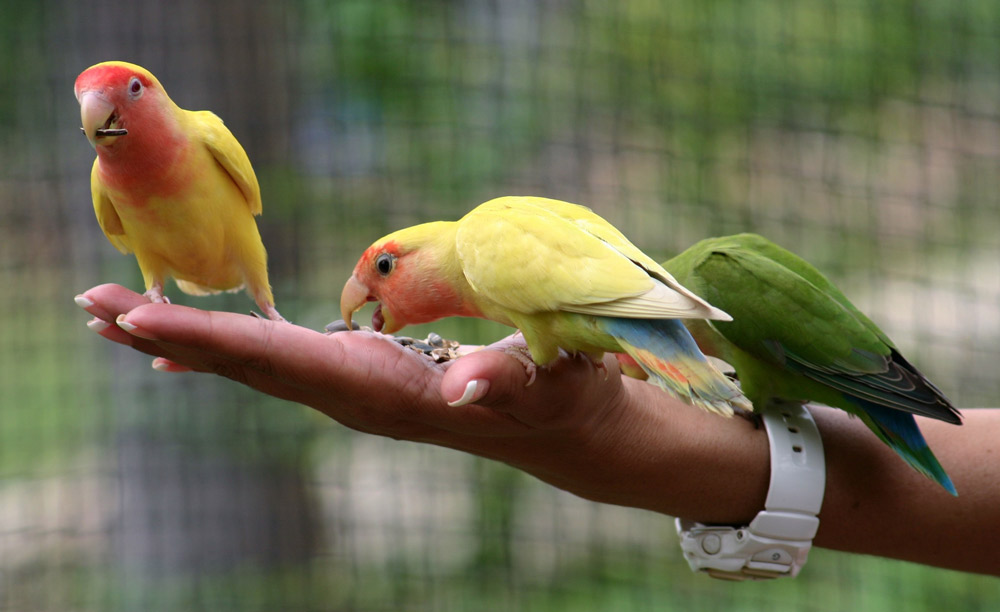
LOVE BIRDS REQUIRE LOTS OF CARE AND ATTENTION
Despite their small size, lovebirds require a lot of care and attention. They are social birds and need a lot of interaction and stimulation to be happy and healthy. They also need a spacious cage with plenty of toys and perches to play on. Lovebirds are also quite active and need plenty of exercises, so it’s important to provide them with enough space to fly and play.
COMMON DISEASES OF LOVEBIRDS
Like all pet birds, lovebirds are susceptible to a variety of health problems. Some of the most common diseases affecting lovebirds include:
Psittacosis (Parrot Fever): This is a bacterial infection that can be transmitted to humans and other pets. Symptoms include respiratory distress, lethargy, loss of appetite, and diarrhea.
Feather picking: This is a behavioral issue that can result from stress, boredom, or other environmental factors. Lovebirds may pluck their own feathers, leading to bald spots and an increased risk of infection.
Obesity: Lovebirds are active birds that need plenty of exercises, and obesity can lead to several health problems. Providing your lovebird with a healthy diet and plenty of opportunities for play and exercise can help prevent obesity.
Vitamin A Deficiency: This is a common problem in pet birds and can result from a lack of fresh fruits and vegetables in the diet. Symptoms include eye problems, skin and feather issues, and an increased risk of respiratory infections.
Bacterial infections: Lovebirds are susceptible to a variety of bacterial infections, including infections of the skin, eyes, and respiratory tract. Symptoms may include swelling, discharge, and lethargy.
It’s important to take your lovebird to an avian veterinarian for regular check-ups and to address any health issues that may arise. Early detection and treatment can help prevent many serious health problems in lovebirds.
To learn more on how to care for your sick Lovebird while waiting for your appointment at the veterinarian you can look at this website: https://pethelpful.com/birds/Caring-For-Sick-Lovebirds
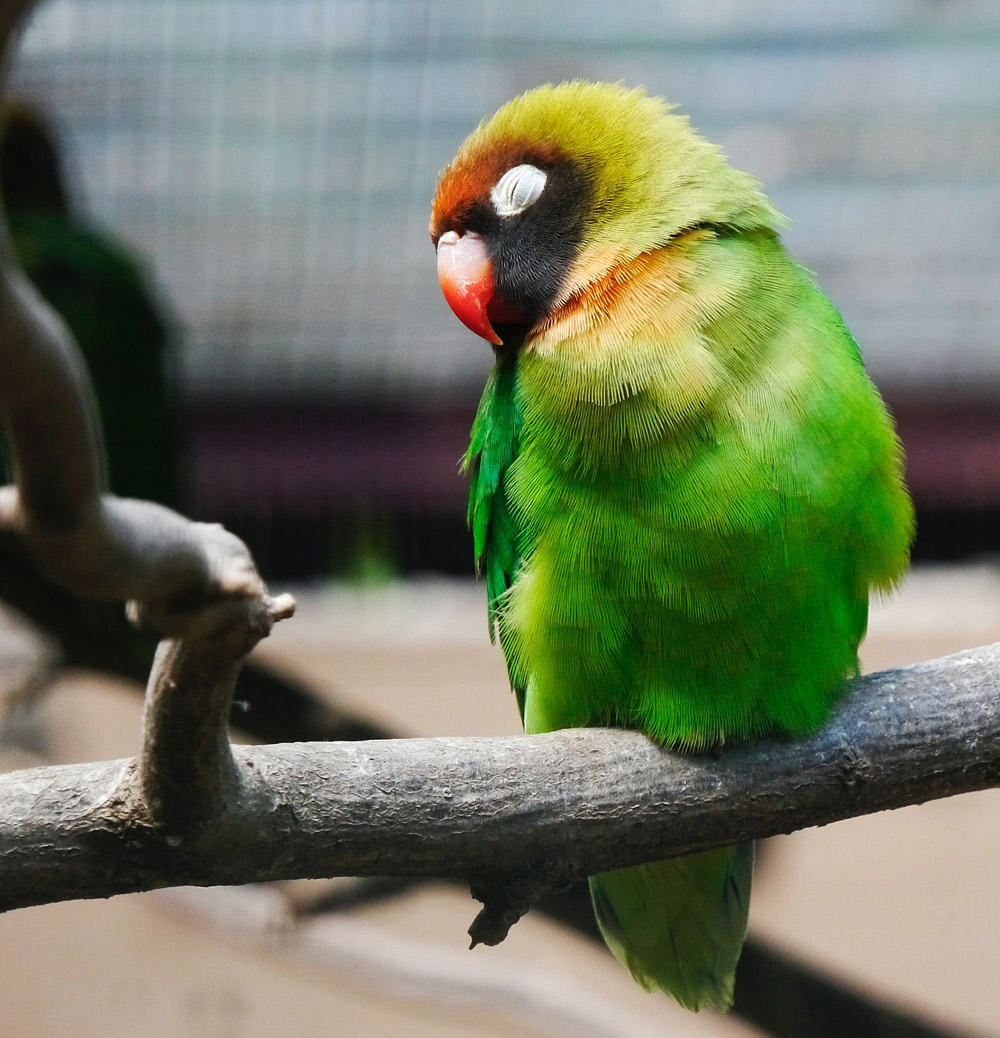
EACH LOVEBIRD HAS ITS OWN PERSONALITY
They also have different personalities and temperaments, just like humans do, and it’s important to choose a bird that matches your lifestyle and personality. Some lovebirds are more active and playful, while others are calmer and more laid-back. It’s also important to consider the amount of time and attention you can dedicate to your lovebird, as they need a lot of interaction and stimulation to be happy and healthy.
WHAT KIND OF CAGE IS NECESSARY TO KEEP A LOVEBIRD?
When it comes to housing, lovebirds need a spacious cage with plenty of room to fly and play. The cage should be made of durable material, such as stainless steel or wrought iron, and should be easy to clean. Lovebirds also need perches and toys to play with, as well as a place to hide and rest.
SOCIAL AND INTERACTIVE BIRDS
It’s also important to note that lovebirds can be very social and interactive with their owners, but they also need time alone to rest and recharge. When considering a lovebird as a pet, it’s important to make sure you have the time and resources to provide them with the care and attention they need.
In conclusion, lovebirds are wonderful and fascinating birds that can make great pets for the right person. However, they require a lot of care and attention, and it’s important to carefully consider whether a lovebird is a right pet for you. If you have the time, resources, and commitment to providing your lovebird with the care and attention they need, it can be a wonderful and rewarding pet. So, if you’re considering adding a lovebird to your family, make sure you’re prepared to provide them with the love and care they need to thrive.
WANT TO LEARN MORE? TAKE A LOOK AT THESE ARTICLES:
- The Scarlet Macaw
- The Scarlet Ibis
- Lovebirds
- The Female Cardinal
- The Great Egret
- The Great Blue Heron
- The American Robin
- The Northern Cardinal
- The Dark-Eyed Junco
- The Blue Jay
- The Gray Catbird
- The Tufted Titmouse
- The Red-winged Blackbird
- The Black-capped Chickadee
- The Evening Grosbeak
- The Common Starling
- The Kiwi Bird
- Wild Birds Unlimited

